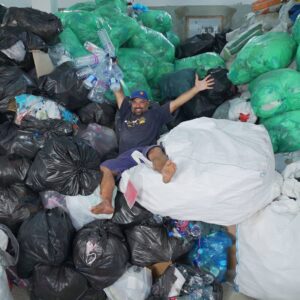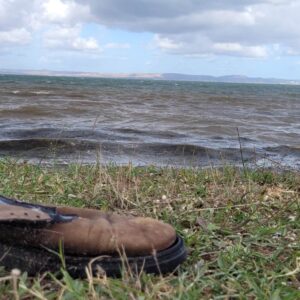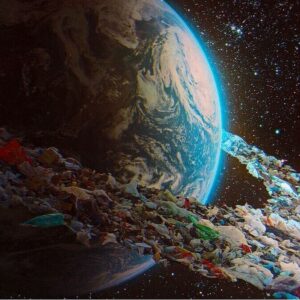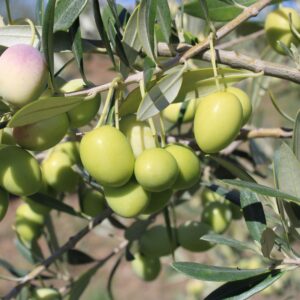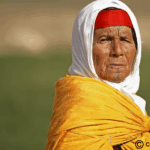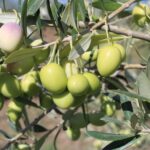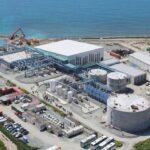In the Mediterranean Sea’s depths, Posidonia, known as “Dhrii” in the Tunisian dialect, fights for its survival against the devastating effects of human actions, such as coastal management, pollution, and trawling. Yet, many Tunisians remain unaware of the crucial role this marine plant plays in the country’s economy. Often mistaken for mere algae, Posidonia Oceanica is much more than aquatic vegetation. It is the pillar of an underwater forest, harboring many marine species that depend on its habitat for survival. By protecting coastlines from erosion, generating oxygen, and sequestering carbon, it proves to be a valuable ally for our ecosystem. However, negligent human activities pose a serious threat to this overlooked gem.
Monastir,July 2023
Posidonia Oceanica: Guardian of Marine Biodiversity and Coastal Ecosystems
Posidonia, the mother of the sea, breathes life into the very soul of our vast oceans. Its presence is the embodiment of oceanic vitality and ecological harmony.
Sahbi Dorai, a passionate environmental activist, and a marine biologist specializing in Posidonia conservation
Posidonia Oceanica, also known as “Neptune grass,” is an indigenous and endemic underwater plant that flourishes in the shallows of the Mediterranean, up to depths of 50 meters. This marine vegetation plays a pivotal role in maintaining the well-being of the local ecosystem, holding immense ecological and economic significance.
Approximately 25% of the area between 0 and 50 meters in the Mediterranean Sea is covered by Posidonia seagrass meadows.
Yassine Ramzi Sghaier, a marine biology expert and environmental activist who serves as the President of TunSea, a Tunisian organization dedicated to protecting the marine environment.
Renowned for its ability to filter sediments, the Posidonia seagrass meadows, characterized by their lush green foliage, serve a vital purpose on multiple fronts. Their first role, like that of any plant, involves photosynthesis, which enables them to capture CO2 and play a crucial part in carbon sequestration—an aspect of particular significance in the face of the prevailing climate change context. However, their contribution doesn’t stop there. In the intricate network of roots and rhizomes that make up the foundation of Posidonia, carbon is stored for remarkably long periods of time, further enhancing its positive environmental impact. “We were taught that oxygen comes from terrestrial forests, yet 60% of the oxygen we breathe actually comes from the sea. Posidonia is the largest organism on Earth that performs long-term carbon sequestration. In fact, compared to 10 forests, Posidonia seagrass sequesters carbon 20 times more efficiently, which is remarkable considering its surface area.” Declares Yassine Ramzi Sghaier.
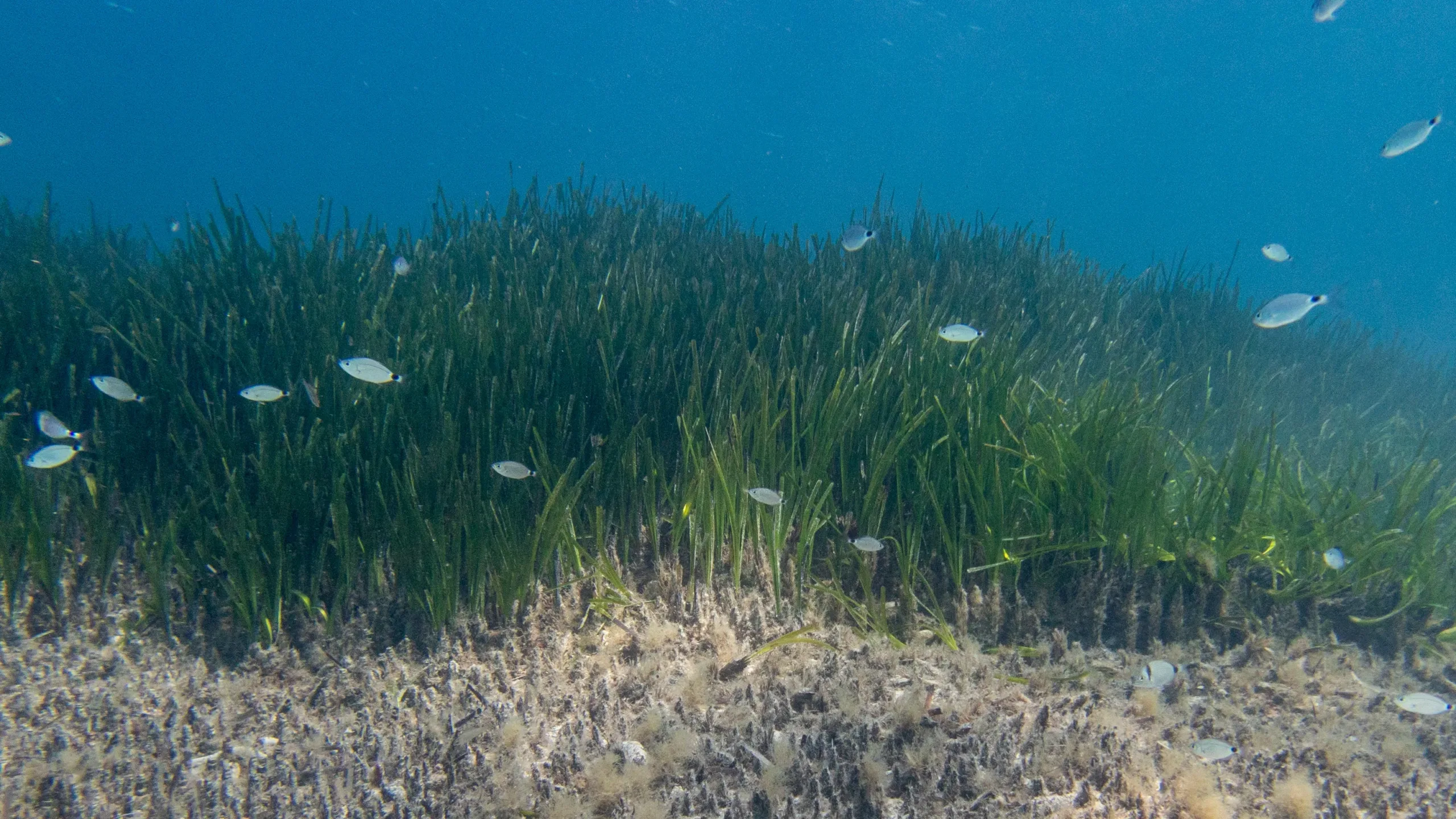
But its contributions don’t end there. It also serves as a reliable source of sustenance and refuge for an array of marine flora and fauna, including starfish, sea urchins, sponges, sea horses, and mollusks. The survival and prosperity of countless underwater species hinge on the presence and health of these Posidonia meadows.
The Posidonia seagrass is not just any marine plant found in the Mediterranean Sea, but an essential habitat supporting 25% of the region’s species. Researchers estimate that the Mediterranean is home to approximately 17,000 species, with a significant 4,000 of them relying on the presence of Posidonia meadows for their survival.
Sahbi Dorai
“Between 30 and 40% of edible fish in the Mediterranean Sea originate from Posidonia meadows ”, explains Yassine Sghaier. He further emphasizes, ” The accumulation of Posidonia leaves on the beach forms vital banks that serve as an ecosystem and shelter for various animal species, particularly crustaceans. Additionally, these Posidonia banks play a pivotal role in protecting the coastline from erosion and maintaining the overall ecological balance of the coastal ecosystem.”
Under Pressure: The Growing Threats Looming over Posidonia Seagrass
As coastal areas undergo development and modifications, concerns arise over potential threats to the fragile ecosystem of Posidonia seagrass. Construction of stone barriers and breakwaters, often employed to protect coastlines, can inadvertently disrupt the delicate balance of Posidonia meadows. As these structures alter the natural flow of currents and sedimentation patterns, they pose a risk of creeping upon and disturbing the seagrass beds.
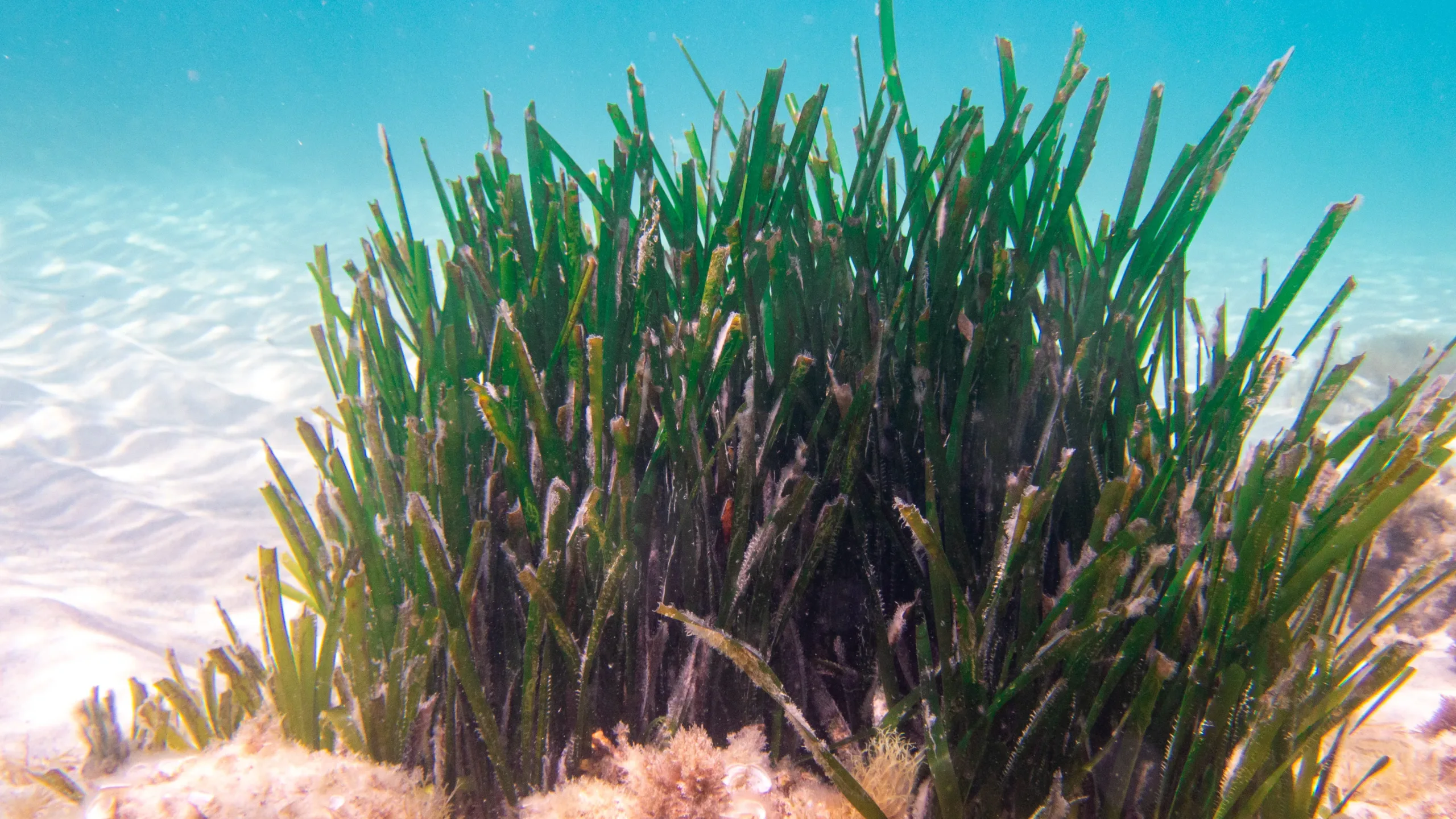
Changes to the coastal environment, particularly those resulting from coastal development for tourism purposes, can have serious consequences for the delicate Posidonia seagrass beds. The strong currents resulting from these changes risk uprooting the entire ecosystem. At the same time, an excessive influx of sediment can smother the meadow, and its rarity makes it susceptible to accidental uprooting.
Yassine Ramzi Sghaier
Sahbi Dorai laments,” I dived near the National Office of Sanitation of Tunisia (ONAS) outlet, and in many areas, there is a lack of Posidonia seagrass, with disturbingly reduced patches as small as 50 cm. This hints at wastewater and industrial impacts from Monastir’s industry on this vital ecosystem.”
In marine ecosystems, the repercussions of pollution extend beyond the inhabitants of the sea. They also cast a threatening shadow over the delicate flora that thrives beneath the waves. The physicochemical alterations in the water resulting from pollution pose a major danger to the underwater world. Pollution continues to contaminate coastal waters, and its insidious effects present a grave threat to the very foundations of the marine ecosystem—specifically, the complex and vital flora that sustains life beneath the surface.
Yassine Ramzi Sghaier highlights a specific danger, “The extensive dumping of phosphogypsum in the Gulf of Gabes has dramatically altered the water’s physicochemical characteristics, particularly transparency. As Posidonia seagrass relies heavily on light for its survival, these changes put its very existence at risk.”
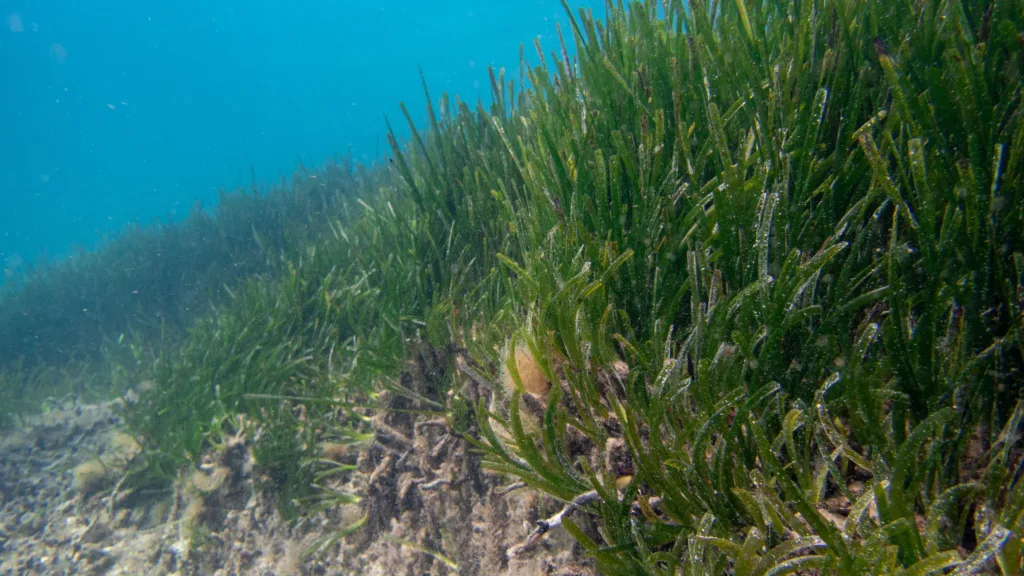
This impact has been further corroborated by a recent study conducted by environmental scientist Dr. Radhouane Zrelli, which revealed a stark reality. The once flourishing expanse of Posidonia seagrass in the Gulf of Gabes, estimated to cover a substantial area in the 1970s, has dwindled to a mere ~10% by 2014. This significant decline has been primarily attributed to industrial pollution stemming from phosphate fertilizer industries, which annually discharge approximately ~10.95 million tonnes of untreated wet phosphogypsum (equivalent to ~30 × 103 tonnes per day) into the coastal environment of the Gulf of Gabes.
The bigger it is, the more it destroys!
Posidonia Oceanica meadows are particularly sensitive to human activities that cause direct alteration, primarily due to mechanical action. Among the mechanical impacts, the use of anchors is consistently highlighted as the main cause of damage to these meadows.
On average, 100 boats arrive at the Kuriat Islands. So, if each boat drops anchor once a day, we would witness the destruction of 50 bundles of Posidonia, meaning 5,000 Posidonia plants destroyed daily, and a staggering 15,000 plants lost on average per month. Meanwhile, in other countries, we are talking about thousands of boats, making one shudder at the sheer quantity of Posidonia destroyed due to anchoring.
Yassine Ramzi Sghaier
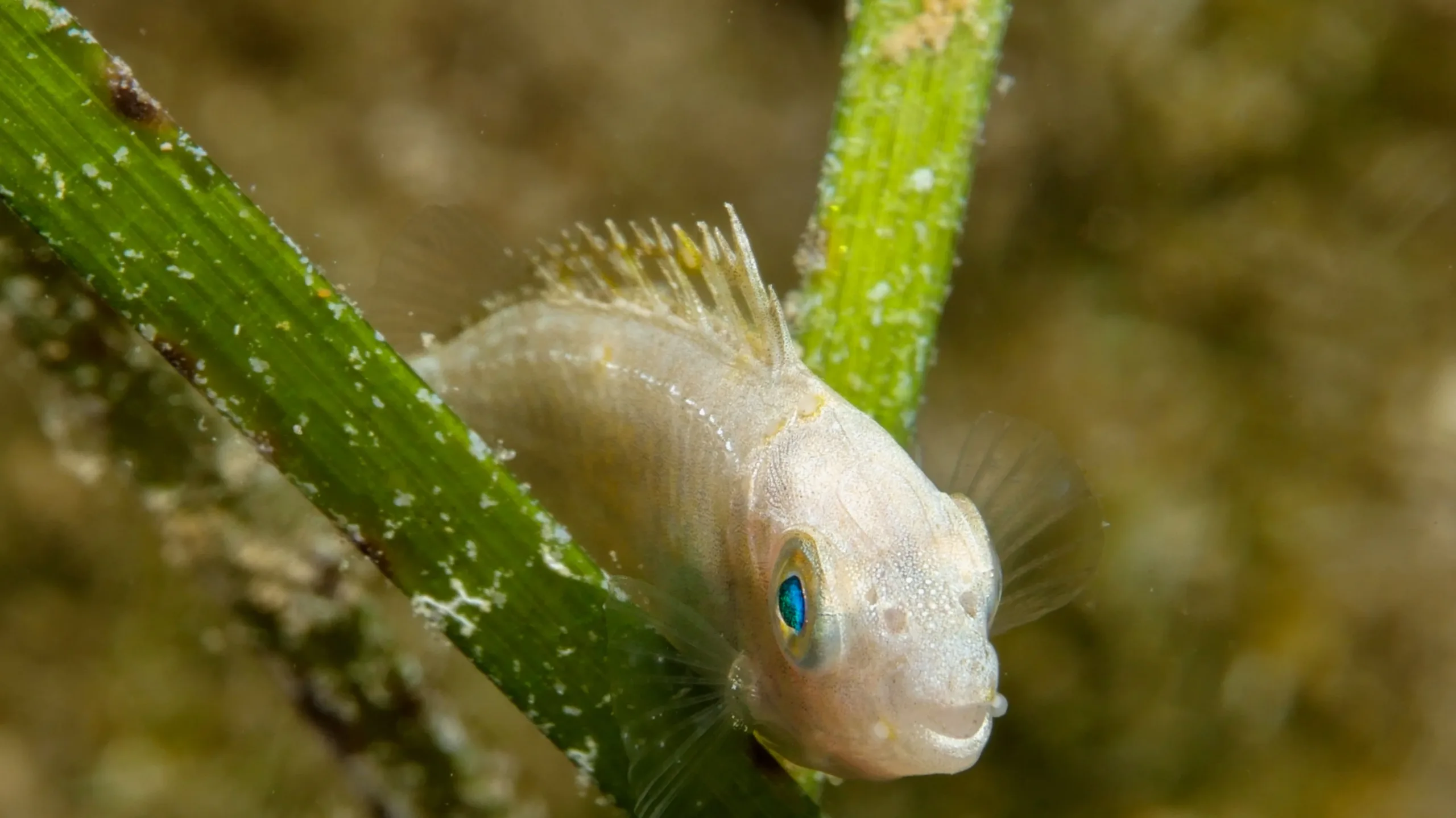
The emblematic marine plant, Posidonia, has not been spared by bottom trawling (read more about bottom trawling in Tunisia), contributing to its devastating decline. This intensive fishing method, involving dragging nets across the seabed to capture a vast array of fish, mercilessly ravages Posidonia meadows. In Tunisia, the law has rightly banned this fishing technique at depths below 50 meters, precisely to protect these vital seagrass meadows, as stated by Yassine Ramzi Sghaier.
Slow Posidonia growth, only 3 centimeters per year, intensifies the destructive consequences of bottom trawling, with regeneration taking thousands of years. What is lost on the surface is lost forever, and sadly, this is the result of the actions of the bottom trawlers.
Yassine Ramzi Sghaier
However, despite this protection, there is still no specific law directly targeting these underwater ecosystems, which thrive along almost all Tunisian coastlines. In contrast, other countries like France have safeguarded them as “remarkable or characteristic landscapes of the natural and cultural heritage of the coast” since September 1989.
The Barcelona Convention, to which Tunisia is a signatory, firmly urges adopting appropriate measures for protecting Posidonia Oceanica populations and all other marine phanerogams (flowering and seed-producing marine plants), which form essential flora in the Mediterranean coastal system. It also emphasizes the need to regulate bottom trawling and other activities that lead to the destruction of seagrasses and other marine phanerogams.
Temperature Troubles: Climate Change and its Effects on Posidonia Seagrass
Faced with the perils of climate change, we cannot ignore the imminent threat it poses to the endangered Posidonia. The observed trend of Mediterranean Sea warming and the expected increase in heatwave episodes, along with other climate-related observations in the region (such as reduced water transparency and an uptick in severe storms), indicate that Posidonia seagrass meadows are facing mounting climatic stress. This relentless challenge demands the plant to channel all its energy into preserving its natural existence.
It’s a relentless struggle for Posidonia as it strives to preserve its natural existence. The stakes are high, and the survival of this remarkable plant hangs in the balance.
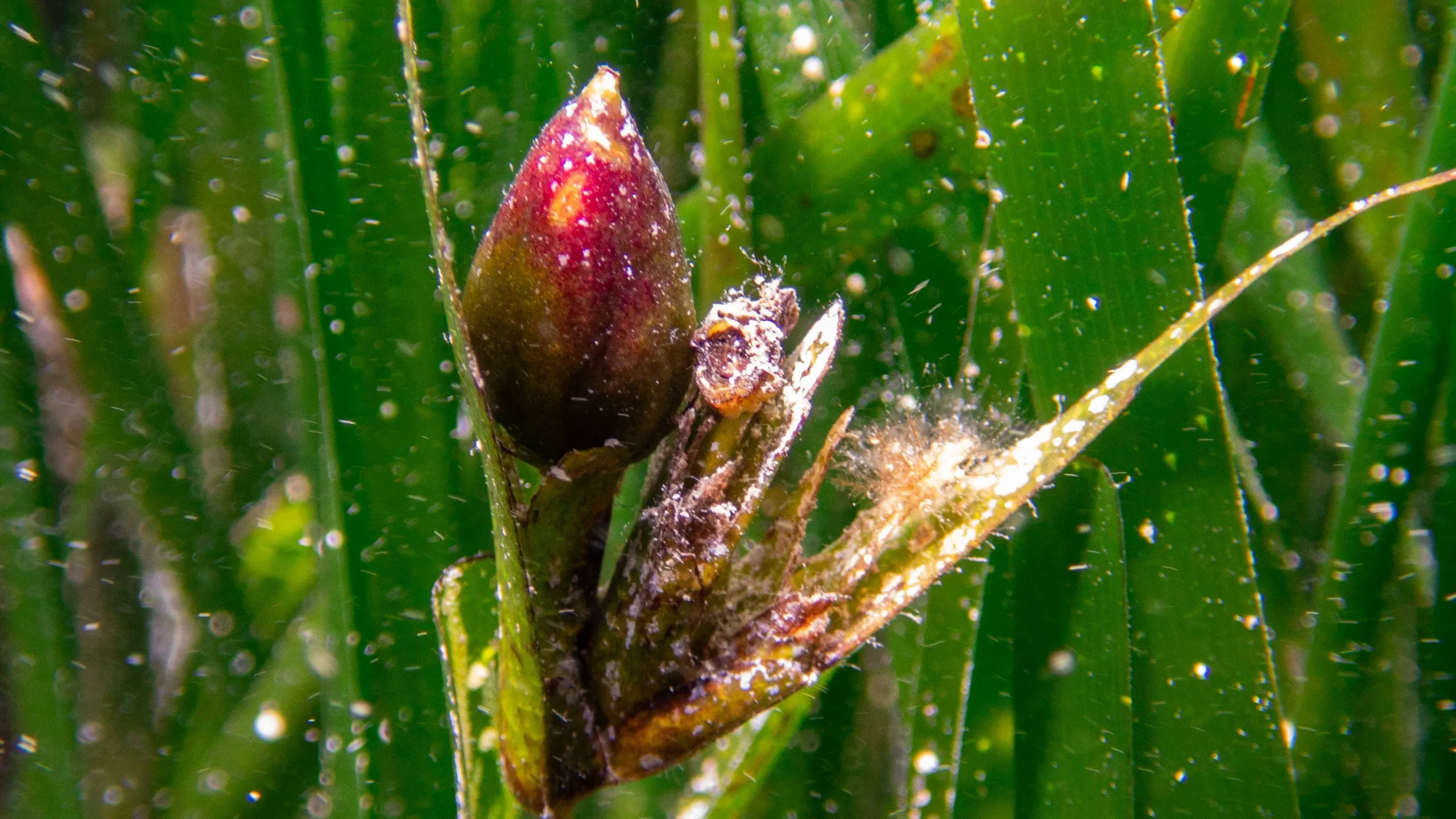
According to Sahbi Dorai, in recent years, the Posidonia seagrass meadows have displayed signs of stress, resulting in a stunning bloom of sea olives along the Tunisian coast. This vibrant display of reproductive activity hints at the plant’s determination to carry on despite adversity. Scientists speculate that rising water temperatures may be a contributing factor, but the true extent of its impact remains a hypothesis.
Remarkably resilient, Posidonia directs all its energy towards reproduction in the face of intense environmental pressure. However, this singular focus renders the plant vulnerable and less resilient to other environmental factors. It’s a race against time as Posidonia fights for its survival in the midst of a changing world.
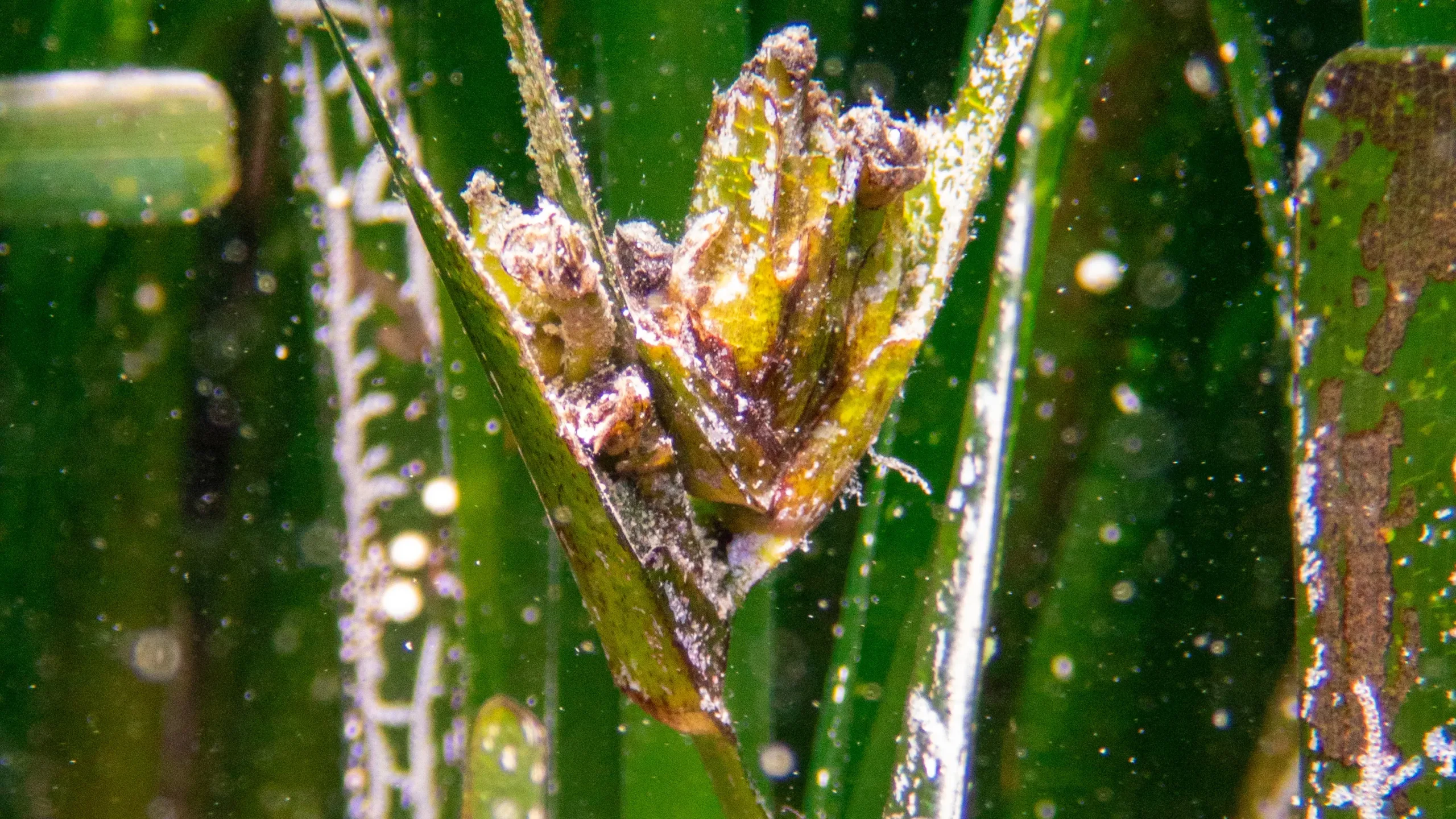
Yet, this extraordinary plant’s adaptability shouldn’t be underestimated. The Posidonia has proven its ability to withstand numerous challenges, not just climate change but also the pressures exerted by humans on the ecosystem. It’s a testament to its revolutionary spirit that it continues to stand tall, defying the odds and forging ahead.
Yassine Ramzi Sghaier rightly emphasizes that Posidonia, like any ecosystem, can weather and defend against a couple of threats. However, the situation becomes dire when a cocktail of five different threats looms over it.
Posidonia Conservation: Human Efforts Leading the Way
Amidst the dire situation of the Posidonia, there is a glimmer of hope found in the wisdom of experts like Sahbi Dorai. He sheds light on the hidden potential of Posidonia, emphasizing its ability to act as a natural and cost-effective solution to tackle erosion problems along coastlines.
“Posidonia banks on the beach represent the billions lost in the construction of stone structures, such as breakwaters and artificial concrete reefs, to protect beaches from erosion. It provides a 100% natural and highly effective alternative, free of charge, to compensate for these large-scale projects,” says Dorai.
This statement highlights the immense significance of Posidonia in environmental conservation, urging us to recognize its crucial role as a natural protector of coastlines. But why does this sentinel marine plant often remain overlooked and undervalued?
The greatest threat to Posidonia is ignorance. How can we hope to protect a species whose value and significance remain unknown and underestimated?
Yassine Ramzi Sghaier.
Thankfully, organizations like Notre Grand Bleu are taking bold steps to raise awareness about Posidonia’s ecological importance. Their awareness cabin on Kuriat Island serves as a hub, inviting thousands of tourists and citizens, young and old, to learn about the critical role of Posidonia Oceanica in the ecosystem. Moreover, they host educational sessions for schoolchildren, and every visitor to the island about the need for Posidonia conservation.
Notably, Notre Grand Bleu’s impact extends beyond the island’s shores and into the boats that arrive daily. The challenge of potential harm caused by boat anchors to delicate Posidonia meadows has been met with an innovative solution – ecological anchoring, pioneered by the organization. This eco-friendly approach has been successfully implemented on the six touristic boats that visit the enchanting Kuriat Islands each day.
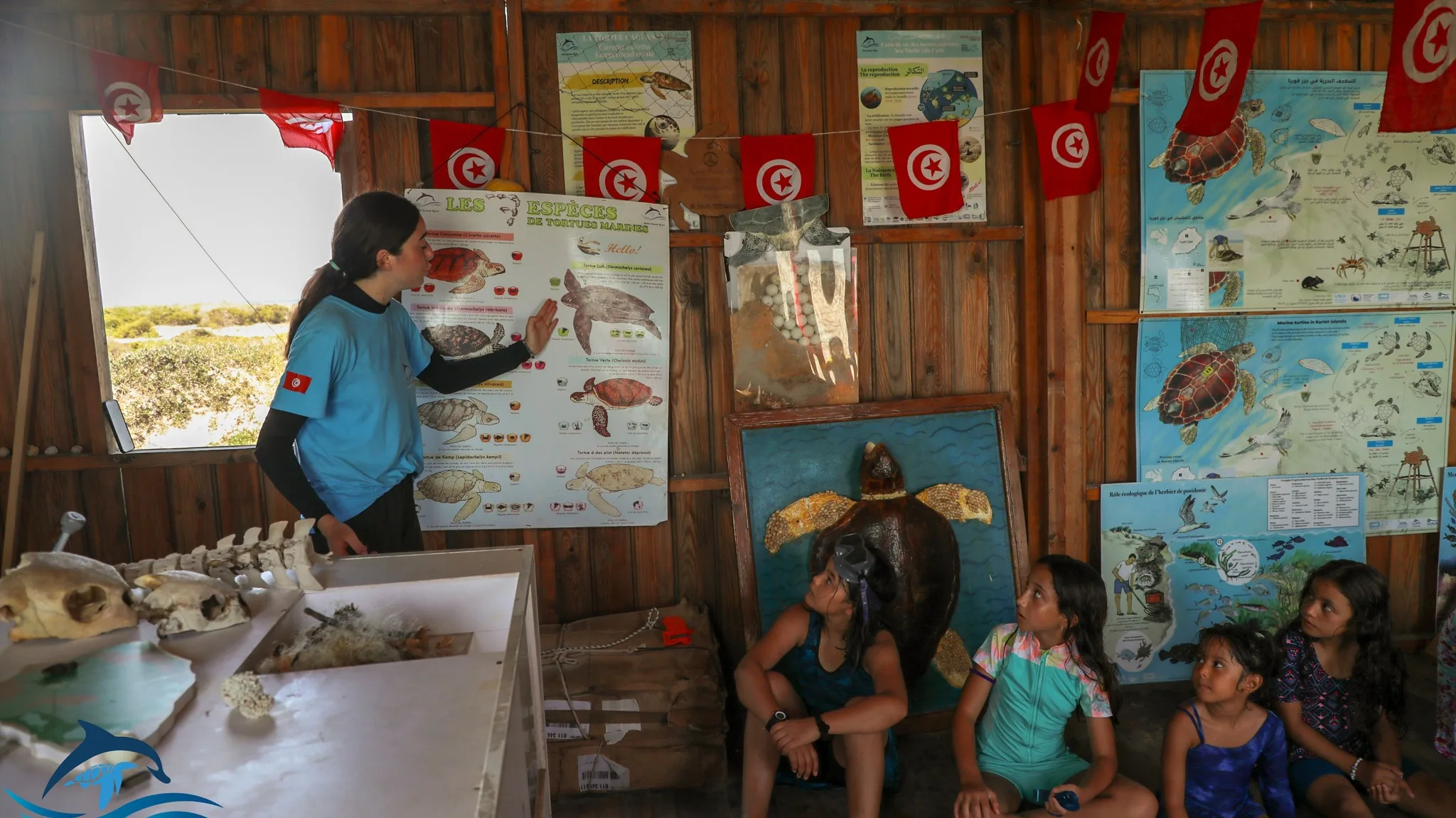
“The large boats that dock at the Kuriat Islands leave no more trace on the precious seagrass meadow thanks to the adoption of ecological anchoring practices. The owners of these ships are also delighted with this innovative approach, as it ensures their safety and protects them from strong winds,” explains Sahbi Dorai.
In a significant step towards international cooperation in the Mediterranean region, the inaugural meeting of the Mediterranean Posidonia Network (MPN) took place from September 21st to 24th, 2021, in Formentera, Spain. Organized by the French Office for Biodiversity (OFB) and the Ministry of Environment and Territory of the Balearic Islands, this workshop united participants from European Union member states, Algeria, Tunisia, and Mediterranean organizations. The primary goal was to formulate a comprehensive roadmap for the entire Mediterranean Sea and bolster European policies for the conservation of this vital marine seagrass.
In conclusion, the threats facing marine biodiversity demand urgent attention and collective action. With the clock ticking, it is imperative for governments, organizations, and individuals to unite in safeguarding our precious marine ecosystems for the well-being of future generations. Only through concerted efforts can we hope to preserve the rich tapestry of life beneath the waves and ensure a sustainable and vibrant marine world for years to come.
This article was developed in collaboration with the Earth Journalism Media Mediterranean Initiative project.
Copyright © 2023 Blue Tunisia. All rights reserved
Sources:
- https://seaescape.fr/blog/2021/04/17/ancrage-posidonie/
- https://www.sciencedirect.com/science/article/pii/S0025326X22011006#:~:text=The%20quantity%20of%20CO2,million%20%E2%82%AC%20(Table%203)
- https://medposidonianetwork.com/pressures/
- https://ejfoundation.org/resources/downloads/Joint-NGO-Policy-Brief-FR.pdf
- https://www.ofb.gouv.fr/actualites/renforcer-la-cooperation-internationale-pour-preserver-la-posidonie-en-mediterranee
